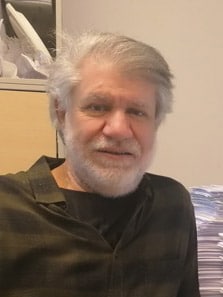Venue: Centre Broca Nouvelle-Aquitaine
Title
Alzheimer’s disease etiology: contribution of APP catabolites distinct from canonical Aβ
Abstract
Aβ has long been at the gravity center of AD pathology. Thus, the amyloid cascade predicts that Aβ accumulation corresponds to the etiological trigger of the disease. However, most of clinical assays aimed at preventing Ab formation or neutralizing it after production have failed so far. We showed that besides Aβ, APP-CTF fragments (namely C99) generated by an enzyme called b-secretase could well contribute to the pathology, before any Ab detection and independently of Aβ.
This seminar will gather recent evidences from our laboratory concerning the early presence of C99 in brain, its toxic phenotypes including endolysososmal perturbation and mitochondrial defects, its occurrence in exosomal vesicles and a genetic approach aimed at lowering its production. This seminar will explain the deleterious side-effects observed when targeting g-secretase in vivo, that could to some extent account for the drastic alterations observed in clinical trials.
Selected publications
LAURITZEN, I ., PARDOSSI-PIQUARD, R., BAUER, C., BRIGHAM, E., ABRAHAM, J.D., RANALDI, S., FRASER, P. St-GEORGE-HYSLOP, P., LE THUC, O., ESPIN, V., CHAMI, L., DUNYS, J. and CHECLER, F. (2012) The b-secretase-derived C-terminal fragment of b-APP, C99 but not Ab, is a key contributor to early intraneuronal lesions in triple transgenic mouse hippocampus. J. Neurosci. 32, 16243-16255.
lauritzen, I., PARDOSSI-PiQUARD, R., BOURGEOIS, A.,PAGNOTTA, S., BIFERI, M-G., BARKATS, M., LACOR, P., KLEIN, W., BAUER, C. and CHECLER F (2016) Intraneuronal aggregation of the b-CTF fragment of APP (C99) induces Ab-independent lysosomal-autophagic pathology. Acta Neuropathol. 132, 257-276.
LAURITZEN, I., BECOT, A., BOURGEOIS, A., PARDOSSI-PIQUARD, R., BIFERI, M-G., BARKATS, M. and CHECLER F. (2019) Targeting g-secretase triggers the selective enrichment of oligomeric APP-CTFs in brain extracellular vesicles from Alzheimer cell and mouse models. Translational. Neurodeg. 8, 35, doi:10.1186/s40035-019-0176-6
VAILLANT-BEUCHOT, L., MARY, A., PARDOSSI-PIQUARD, R., BOURGEOIS, A., LAURITZEN, I., EYSERT, F., KINOSHITA, P.F., CAZARETH, J., BADOT, C., FRAGAKI, K., BUSSIERE, R., MARTIN, C., MARY, R., BAUER, C., PAGNOTTA, S., PAQUIS-FLUCKLINGER, V., BUEE-SCHERRER, V., BUEE, L., LACAS-GERVAIS, S, CHECLER F and CHAMI, M. (2021) Accumulation of amyloid precursor protein C-terminal fragments triggers mitochondrial structure, function and mitophagy defects in Alzheimer’s disease models and human brains . Acta Neuropathologica. 141, 39-65.
Invited by Gaël Barthet and Christophe Mulle (IINS)
Institut de Pharmacologie Moléculaire et Cellulaire, CNRS-UMR7275,
Team labeled « Fondation pour la Recherche Médicale » et « Laboratoire d’excellence Distalz »
Sophia-Antipolis, France


